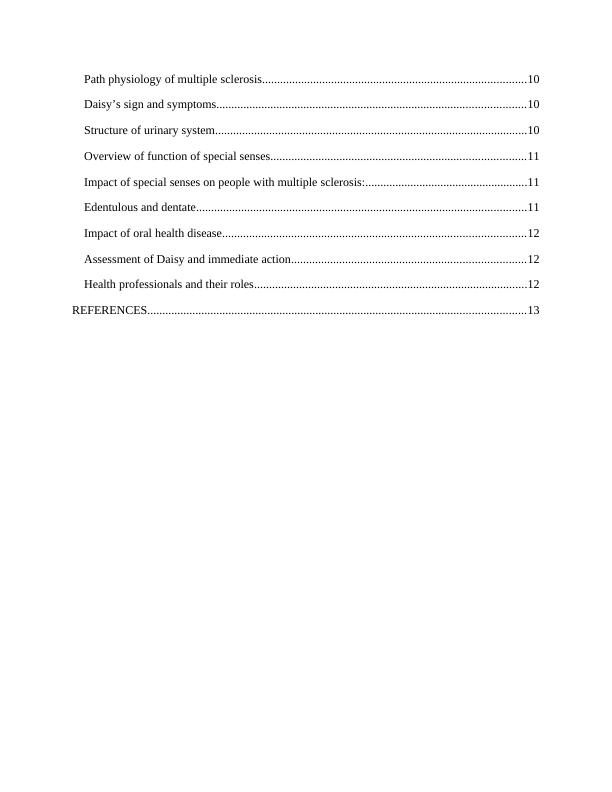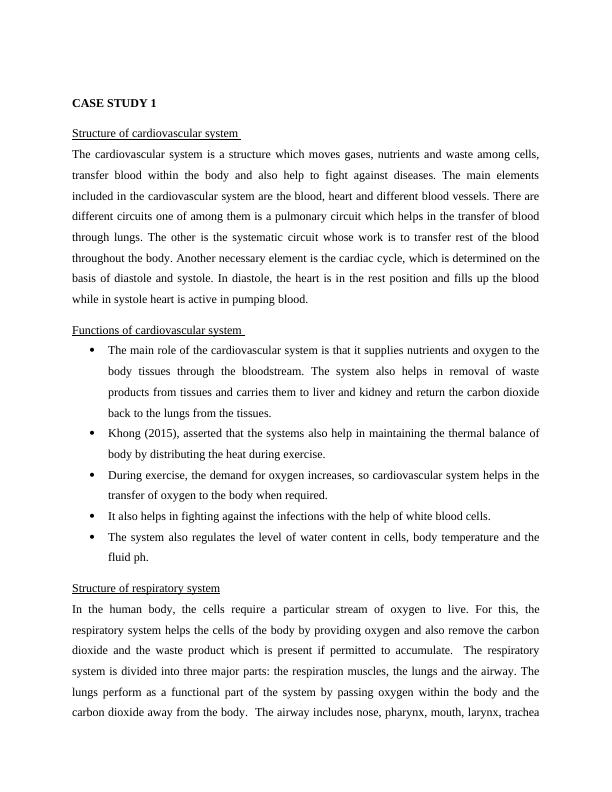Case studies of angina and emphysema in the cardiovascular system
Added on 2020-04-29
17 Pages4555 Words197 Views
Case studies

TABLE OF CONTENTSCASE STUDY 1..............................................................................................................................3Structure of cardiovascular system..............................................................................................3Functions of cardiovascular system.............................................................................................3Structure of respiratory sysytem..................................................................................................3Interaction between cardiovascular and respiratory system........................................................4Effect of age on respiratory and cardiovascular system..............................................................4Pathophysiology of angina and emphysema................................................................................4Common risk factors of angina and emphysema.........................................................................5Assessment of john and actions taken.........................................................................................5Medical specialists and their roles...............................................................................................6Artificially acquired immunity....................................................................................................6CASE STUDY -2............................................................................................................................6Main Structure of Endocrine System...........................................................................................6Overview of Normal Functioning of Endocrine System.............................................................6Pathophysiology of Hypothyroidism and risk factors.................................................................7Isabella’s sign and symptoms to pathophysiology......................................................................7Main structure of digestive system..............................................................................................7Overview of normal function of digestive system.......................................................................8Main function of immune system................................................................................................8Pathophysiology of an autoimmune disease................................................................................8Assessment of Isabella and immediate actions............................................................................9Health professionals and their roles.............................................................................................9CASE STUDY -3............................................................................................................................9Functions of nervous system.......................................................................................................9

Path physiology of multiple sclerosis........................................................................................10Daisy’s sign and symptoms.......................................................................................................10Structure of urinary system........................................................................................................10Overview of function of special senses.....................................................................................11Impact of special senses on people with multiple sclerosis:......................................................11Edentulous and dentate..............................................................................................................11Impact of oral health disease.....................................................................................................12Assessment of Daisy and immediate action..............................................................................12Health professionals and their roles...........................................................................................12REFERENCES..............................................................................................................................13

CASE STUDY 1Structure of cardiovascular system The cardiovascular system is a structure which moves gases, nutrients and waste among cells,transfer blood within the body and also help to fight against diseases. The main elementsincluded in the cardiovascular system are the blood, heart and different blood vessels. There aredifferent circuits one of among them is a pulmonary circuit which helps in the transfer of bloodthrough lungs. The other is the systematic circuit whose work is to transfer rest of the bloodthroughout the body. Another necessary element is the cardiac cycle, which is determined on thebasis of diastole and systole. In diastole, the heart is in the rest position and fills up the bloodwhile in systole heart is active in pumping blood. Functions of cardiovascular system The main role of the cardiovascular system is that it supplies nutrients and oxygen to thebody tissues through the bloodstream. The system also helps in removal of wasteproducts from tissues and carries them to liver and kidney and return the carbon dioxideback to the lungs from the tissues.Khong (2015), asserted that the systems also help in maintaining the thermal balance ofbody by distributing the heat during exercise. During exercise, the demand for oxygen increases, so cardiovascular system helps in thetransfer of oxygen to the body when required.It also helps in fighting against the infections with the help of white blood cells.The system also regulates the level of water content in cells, body temperature and thefluid ph.Structure of respiratory systemIn the human body, the cells require a particular stream of oxygen to live. For this, therespiratory system helps the cells of the body by providing oxygen and also remove the carbondioxide and the waste product which is present if permitted to accumulate. The respiratorysystem is divided into three major parts: the respiration muscles, the lungs and the airway. Thelungs perform as a functional part of the system by passing oxygen within the body and thecarbon dioxide away from the body. The airway includes nose, pharynx, mouth, larynx, trachea

End of preview
Want to access all the pages? Upload your documents or become a member.
Related Documents
Case Study of Nursing Assignmentlg...
|25
|5070
|63
Questions and Answer of Physiology and Medicinelg...
|9
|1980
|62
Diploma of Nursing: Clinical Scenarios and Nursing Care Planlg...
|12
|2030
|423
Interactions between Respiratory, Digestive and Circulatory Systemslg...
|17
|983
|352
HLTAAP002 - Confirm physical health statuslg...
|8
|3457
|125
CHC33015 Healthy body Functions Research 2022lg...
|8
|1558
|30
